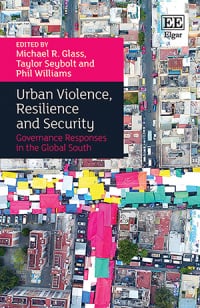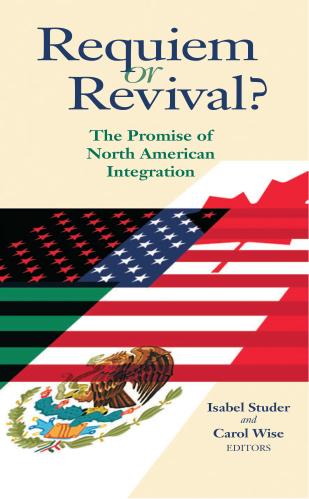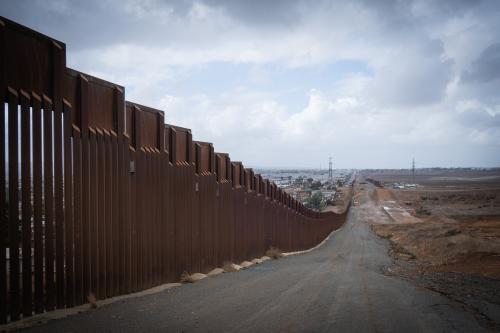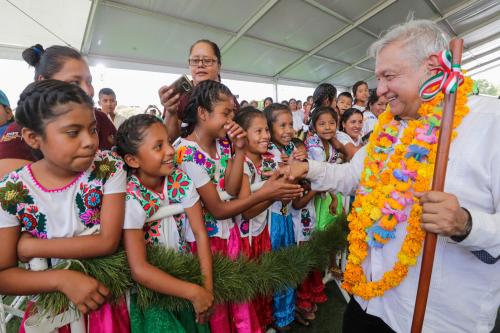Vanda Felbab-Brown contrasts Mexican President Andrés Manuel López Obrador’s response to the coronavirus (COVID-19) with President Felipe Calderón’s response in 2009 to the swine flu (H1N1) outbreak in Mexico. This piece was originally published by La Reforma’s Mexico Today under the headline “AMLO & Covid, Calderón & H1N1.”
Motivated by a false hope to save Mexico’s tanking economy, the feeble non-response of President Andres Manuel Lopez Obrador (AMLO) to the coronavirus (COVID19) has ranged from the President burring his head in the sand to making criminally-negligent statements urging the opposite of social distancing. Such an attitude is disastrous and can cost the lives of many Mexican people. Nor will Mexico’s economy be saved if the pandemic widely infects the country.
The AMLO administration’s response to COVID19 starkly contrasts with the response of the Felipe Calderón administration to the H1N1 swine flu. Arriving to Mexico in the spring of 2009, that epidemic infected 66,000 Mexicans by the end of 2009 and killed 671 (Vargas Parada, 2009). But these numbers remained far lower than could have been the case, thanks to the Calderon’s administration swift and effective response, for which it received global praise. Swiftly after the virus and ensuing epidemic were identified in April 2009, the Calderón administration banned all public gatherings and shut down schools and in Mexico City, and all non-essentially services were closed. The national shutdown resulted in a large drop in tourism — necessary for containing the illness, but costly economically. Hospitals were ordered to reserve at least 12 percent of beds for the pandemic flu patients. Doctors fanned out to the country’s airports and other transportation hubs, screening those who exhibited symptoms. The Mexican military was handing out face masks. Having lacked adequate preparedness, the government promptly invested $300 million in buying antiviral drugs, vaccines, diagnostic and other laboratory equipment, and mechanical ventilators. The pandemic cost Mexico at least $4 billion, about 0.5% of GDP, by the end of 2009 and $9 billion overal (Ear, 2012).
The Calderon administration’s response to the crisis had its glitches. Like all flus, the H1N1 hit particularly badly the elderly and people with conditions like asthma, diabetes, and obesity – the latter two, very widespread in Mexico. But surprisingly, it also badly hit otherwise-healthy young people who started dying of related pneumonia. Yet although hospitals and clinics began witnessing a surprisingly jump of pneumonia-deaths among the young even before April, the Mexican health care system lacked a unified coordinated reporting system capable of ascertaining that an actual epidemic was breaking out. Moreover, all of Mexico’s preparedness system was premised on the belief that a flu pandemic would arrive from Asia — first manifesting there and thus giving Mexico time to prepare. Instead, the swine flu started in North America, catching the already-strained Mexican health care system off guard. The repercussions of inadequate preparedness again drive home how much harm AMLO has caused by dismissing the threat of COVID to Mexico.
Back in 2009, when the H1N1 was recognized, Mexico lacked enough kits for rapid diagnosis. Early on, Mexico’s health care system was overwhelmed. Exacerbating the treatment challenge was the fact that many people in Mexico self-diagnose their ailments and self-treat with homemade quack remedies, or buy any kind of medication in drug stores that fail to enforce prescription requirements. Yet existing H1N1 medications were effective only within 48 hours of symptom onset. Thus, by the time the infected people arrived at hospitals, H1N1 had often progressed beyond the point when existing treatments could help.
Crucially, the Calderón administration responded with honesty and transparency. Although some officials urged him to hide the epidemic to avoid panic and economic downturn, Calderón overruled them. Instead, government officials, including Calderón, launched a massive public awareness campaign urging people to seek medical attention early on. And Mexico kept accurately reporting infection data.
At the time, Mexico’s cooperation with the United States and Canada was another bright spot and another reason while the H1N1 deaths were contained well below the 10,000 deaths that seasonal flus normally inflict on the country. For years, Mexico had been developing the Global Health Security Action Group, a public health communications network, with the United States, Canada, Japan, and several European countries. Though faulty in some ways, the North American Plan for Avian and Pandemic Influenza (NAPAPI) was also in existence and kicked into gear (and was later updated and improved). As the disease spread, U.S. doctors headed to Mexico to help, and Canada sent vaccines and supplies.
Such international cooperation is now abjectly lacking on the part of both the AMLO and Trump administrations.








Commentary
Lessons learned from Felipe Calderón’s swift response to H1N1 in 2009
March 27, 2020